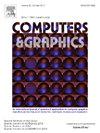Scalable Class-Centric Visual Interactive Labeling
IF 2.8
4区 计算机科学
Q2 COMPUTER SCIENCE, SOFTWARE ENGINEERING
引用次数: 0
Abstract
Large unlabeled datasets demand efficient and scalable data labeling solutions, in particular when the number of instances and classes is large. This leads to significant visual scalability challenges and imposes a high cognitive load on the users. Traditional instance-centric labeling methods, where (single) instances are labeled in each iteration struggle to scale effectively in these scenarios. To address these challenges, we introduce cVIL, a Class-Centric Visual Interactive Labeling methodology designed for interactive visual data labeling. By shifting the paradigm from assigning-classes-to-instances to assigning-instances-to-classes, cVIL reduces labeling effort and enhances efficiency for annotators working with large, complex and class-rich datasets. We propose a novel visual analytics labeling interface built on top of the conceptual cVIL workflow, enabling improved scalability over traditional visual labeling. In a user study, we demonstrate that cVIL can improve labeling efficiency and user satisfaction over instance-centric interfaces. The effectiveness of cVIL is further demonstrated through a usage scenario, showcasing its potential to alleviate cognitive load and support experts in managing extensive labeling tasks efficiently.

可扩展的以类为中心的视觉交互标签
大型未标记数据集需要高效和可扩展的数据标记解决方案,特别是当实例和类的数量很大时。这导致了显著的视觉可伸缩性挑战,并对用户施加了很高的认知负荷。传统的以实例为中心的标记方法,在每次迭代中标记(单个)实例,在这些场景中很难有效地扩展。为了应对这些挑战,我们引入了cVIL,这是一种以类为中心的可视化交互标签方法,专为交互式可视化数据标签而设计。通过将范式从“类到实例”转换为“实例到类”,cVIL减少了标注工作,并提高了注释者处理大型、复杂和类丰富数据集的效率。我们提出了一种新的视觉分析标签界面,建立在概念cVIL工作流之上,使传统的视觉标签具有更好的可扩展性。在一项用户研究中,我们证明了cVIL可以提高以实例为中心的界面的标记效率和用户满意度。通过一个使用场景进一步证明了cVIL的有效性,展示了其减轻认知负荷和支持专家有效管理广泛标签任务的潜力。
本文章由计算机程序翻译,如有差异,请以英文原文为准。
求助全文
约1分钟内获得全文
求助全文
来源期刊

Computers & Graphics-Uk
工程技术-计算机:软件工程
CiteScore
5.30
自引率
12.00%
发文量
173
审稿时长
38 days
期刊介绍:
Computers & Graphics is dedicated to disseminate information on research and applications of computer graphics (CG) techniques. The journal encourages articles on:
1. Research and applications of interactive computer graphics. We are particularly interested in novel interaction techniques and applications of CG to problem domains.
2. State-of-the-art papers on late-breaking, cutting-edge research on CG.
3. Information on innovative uses of graphics principles and technologies.
4. Tutorial papers on both teaching CG principles and innovative uses of CG in education.
 求助内容:
求助内容: 应助结果提醒方式:
应助结果提醒方式:


